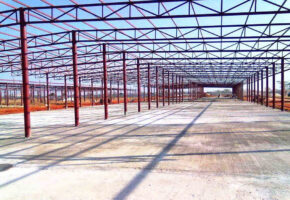THE ROLE OF MATERIAL PROPERTIES IN STRUCTURAL MECHANICS
The Role of Material Properties in Structural Mechanics
Structural mechanics is a fundamental branch of engineering that deals with the analysis and design of structures to ensure their safety, stability, and performance. Material properties play a pivotal role in this field, as they directly influence the behavior of structures under various loads and environmental conditions. Understanding these properties and their significance is essential for engineers and designers to create robust and reliable structures. In this article, we will delve into the critical role of material properties in structural mechanics, highlighting key points.
1. Elasticity
One of the primary material properties that significantly affects structural mechanics is elasticity. Elasticity refers to a material’s ability to deform when subjected to external loads and return to its original shape when the load is removed. Young’s Modulus, a measure of a material’s stiffness, is a crucial parameter. It determines how much a material will deform under a given load and is crucial in calculating structural deflections and stress.
2. Strength
Strength is another critical material property. It measures a material’s ability to withstand loads without failing. Two key strength properties are tensile strength (resistance to stretching) and compressive strength (resistance to compression). The selection of materials with appropriate strength characteristics is essential to ensure that structures can support the loads they will experience during their lifetime.
3. Ductility
Ductility is the property that describes how much a material can deform plastically before breaking. In structural mechanics, materials with high ductility are preferred because they provide warning signs, such as yielding, before catastrophic failure. Ductile materials allow structures to undergo significant deformation and absorb energy during events like earthquakes or impacts, increasing safety.
4. Toughness
Toughness is the ability of a material to absorb energy before fracturing. It is a combination of strength and ductility. In structural engineering, materials with high toughness are used to ensure that structures can withstand dynamic loads and impacts, such as those experienced in bridges, buildings, and other infrastructure.
5. Hardness
Hardness measures a material’s resistance to wear, indentation, and scratching. While not a primary concern in many structural applications, it can be essential in specific cases, such as selecting materials for components that come into contact with abrasive surfaces.
6. Thermal Properties
Thermal properties, including thermal conductivity and coefficient of thermal expansion, are vital in structural mechanics. Understanding how a material responds to temperature changes is critical in designing structures that will be exposed to varying environmental conditions, such as temperature fluctuations, heat, or cold.
7. Corrosion Resistance
In many structural applications, materials are exposed to harsh environmental conditions. Corrosion resistance is a crucial material property, especially for structures in marine, chemical, or industrial environments. Materials that resist corrosion ensure the longevity and safety of structures.
8. Fatigue Resistance
Structures often experience repetitive cyclic loading, leading to fatigue. The ability of a material to withstand this type of loading without failure is known as fatigue resistance. Materials with high fatigue resistance are essential in applications where structures are subject to repeated stress cycles, such as bridges and aircraft components.
9. Environmental Compatibility
In sustainable engineering practices, it’s important to consider a material’s environmental impact. The choice of materials should take into account factors like recyclability, sustainability, and the energy required for manufacturing.
10. Material Selection and Design
Selecting the right material for a structural application is a complex process that involves balancing various material properties to meet design requirements. Engineers must consider factors such as loading conditions, cost, durability, and safety. Computer-aided tools and simulation software have become indispensable in this process, enabling the analysis and optimization of structural designs based on material properties.
In conclusion, material properties are the foundation of structural mechanics. Engineers must carefully assess and select materials that best suit the specific requirements of a project. A deep understanding of material properties, their interplay, and their significance in the context of structural mechanics is essential for the successful design and construction of safe and durable structures.


